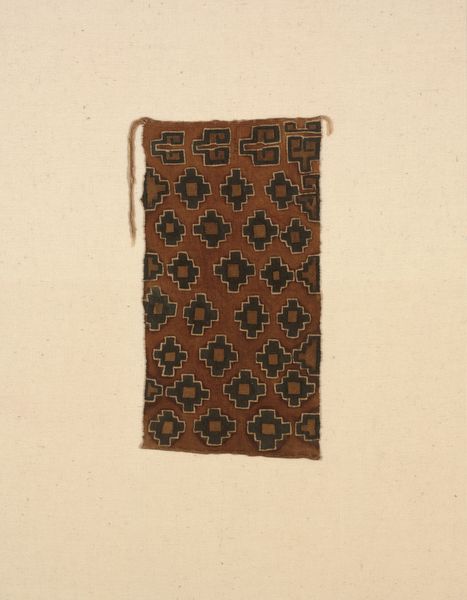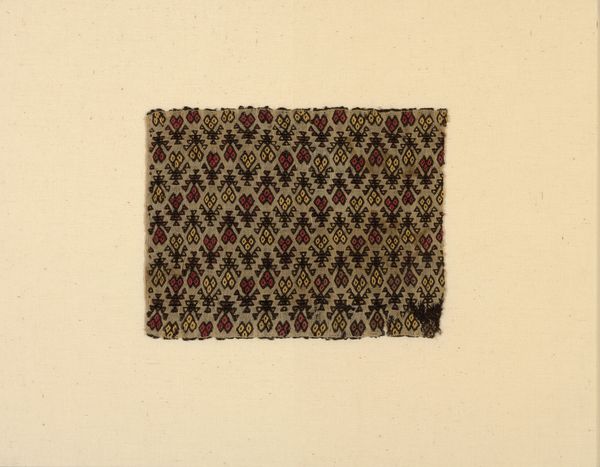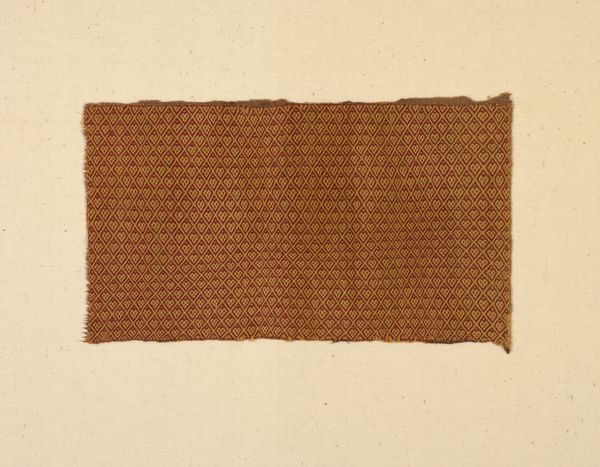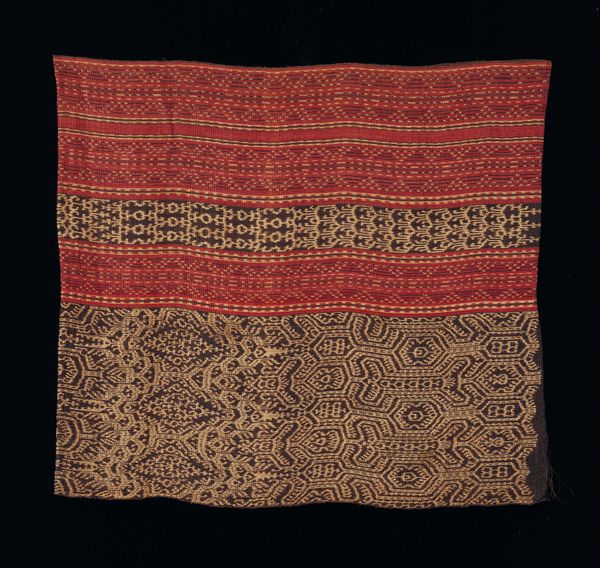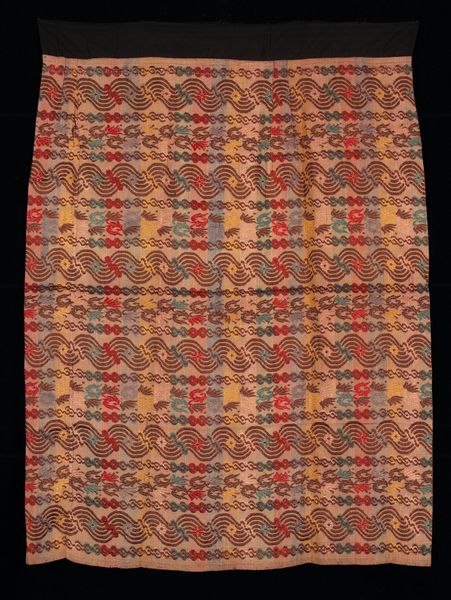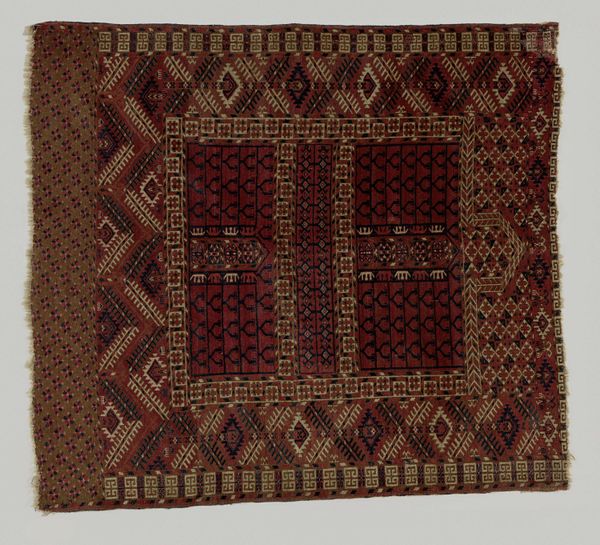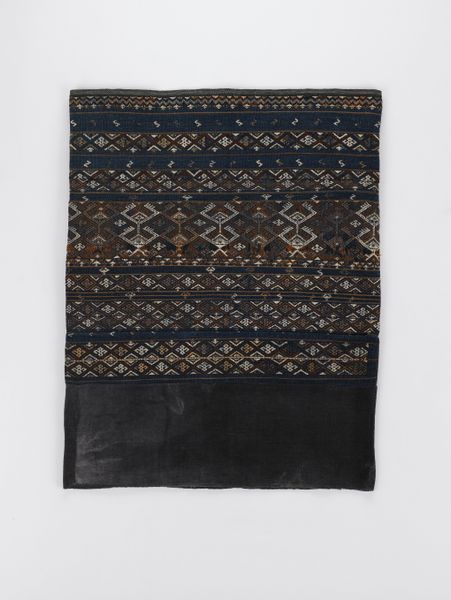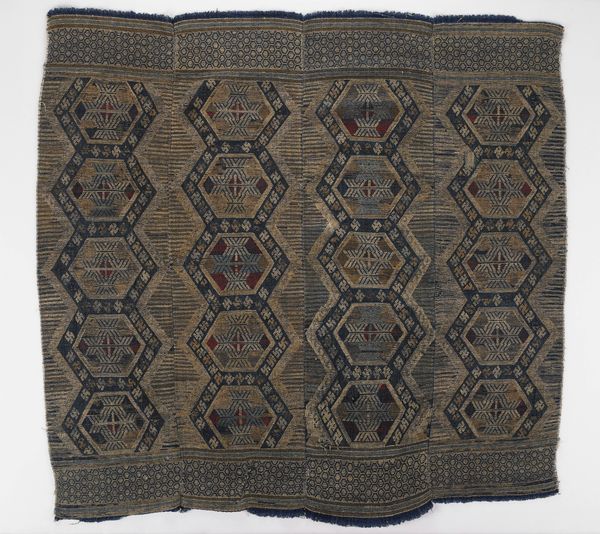
weaving, textile
#
weaving
#
textile
#
geometric
#
indigenous-americas
Dimensions: 28.9 × 14.3 cm (11 3/8 × 5 5/8 in.)
Copyright: Public Domain
Editor: This is a textile sampler, created sometime between 1000 and 1476 by the Chancay people. The Art Institute of Chicago holds it. I’m immediately struck by the geometric complexity and earth tones – it feels so intentional. What can you tell me about how this piece fits into its cultural context? Curator: It's fascinating to consider this Chancay weaving within its socio-political framework. The Chancay culture flourished in a region known for its sophisticated textile production. Were these geometric patterns merely decorative, or did they serve as a form of visual communication, perhaps indicating social status or even historical narratives? Editor: Communication, you say? So the symbols mean something? Curator: Potentially, yes. Understanding the role of weaving in Andean societies is crucial. Textiles were highly valued commodities. It could indicate access to resources, specialisation in labour. These kinds of patterns may have had very particular associations that we no longer understand. How does seeing it within the institution of the museum change your view of the piece? Editor: Well, placing it behind glass really highlights its preservation, it gives a sense of importance. Makes me want to know what the symbols meant, and the person that made it! Curator: Exactly! Museums, while preserving, also create narratives. Displaying it as art elevates it, maybe divorcing it from its original functional context. Considering these layers enriches our understanding, doesn’t it? Editor: Absolutely. I learned to look beyond the surface and think about its life beyond the museum. Curator: Me too, seeing the excitement of art through another's eyes brings new perspective.
Comments
No comments
Be the first to comment and join the conversation on the ultimate creative platform.
